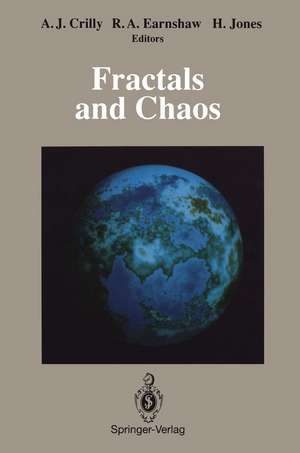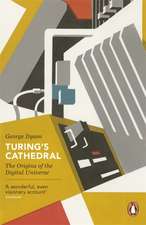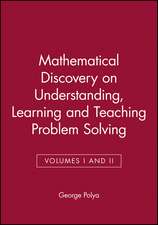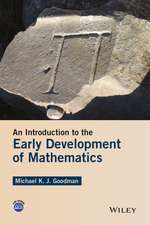Fractals and Chaos
Editat de A. J. Crilly, Rae Earnshaw, Huw Jonesen Limba Engleză Paperback – 16 sep 2011
Preț: 387.96 lei
Nou
Puncte Express: 582
Preț estimativ în valută:
74.23€ • 77.51$ • 61.30£
74.23€ • 77.51$ • 61.30£
Carte tipărită la comandă
Livrare economică 15-29 aprilie
Preluare comenzi: 021 569.72.76
Specificații
ISBN-13: 9781461277705
ISBN-10: 1461277701
Pagini: 292
Ilustrații: IX, 277 p.
Dimensiuni: 155 x 235 x 15 mm
Greutate: 0.41 kg
Ediția:Softcover reprint of the original 1st ed. 1991
Editura: Springer
Colecția Springer
Locul publicării:New York, NY, United States
ISBN-10: 1461277701
Pagini: 292
Ilustrații: IX, 277 p.
Dimensiuni: 155 x 235 x 15 mm
Greutate: 0.41 kg
Ediția:Softcover reprint of the original 1st ed. 1991
Editura: Springer
Colecția Springer
Locul publicării:New York, NY, United States
Public țintă
ResearchDescriere
This volume is based upon the presentations made at an international conference in London on the subject of 'Fractals and Chaos'. The objective of the conference was to bring together some of the leading practitioners and exponents in the overlapping fields of fractal geometry and chaos theory, with a view to exploring some of the relationships between the two domains. Based on this initial conference and subsequent exchanges between the editors and the authors, revised and updated papers were produced. These papers are contained in the present volume. We thank all those who contributed to this effort by way of planning and organisation, and also all those who helped in the production of this volume. In particular, we wish to express our appreciation to Gerhard Rossbach, Computer Science Editor, Craig Van Dyck, Production Director, and Nancy A. Rogers, who did the typesetting. A. J. Crilly R. A. Earnshaw H. Jones 1 March 1990 Introduction Fractals and Chaos The word 'fractal' was coined by Benoit Mandelbrot in the late 1970s, but objects now defined as fractal in form have been known to artists and mathematicians for centuries. Mandelbrot's definition-"a set whose Hausdorff dimension is not an integer" -is clear in mathematical terms. In addition, related concepts are those of self-similarity and sub-divisibility. A fractal object is self-similar in that subsections of the object are similar in some sense to the whole object.
Cuprins
1 Fractals.- 1 Jones: Fractals Before Mandelbrot.- 2 Reeve: Mandelbrot, Julia Sets and Nonlinear Mappings.- 3 Batty: Cities as Fractals: Simulating Growth and Form.- 4 Kaandorp: Modelling Growth Forms of Sponges with Fractal Techniques.- 5 Saupe: Random Fractals in Image Synthesis.- 6 Horn: IFSs and the Interactive Design of Tiling Structures.- 7 Bressloff and Stark: Neural Networks, Learning Automata and Iterated Function Systems.- 2 Chaos.- 8 Crilly: The Roots of Chaos—A Brief Guide.- 9 Lansdown: Chaos, Design and Creativity.- 10 Novak: Relativistic Particles in a Magnetic Field.- 11 Mullin: Chaos in Physical Systems.- 12 Darbyshire and Price: Phase Portraits from Chaotic Time Series.- 13 Pottinger: Data Visualisation Techniques for Nonlinear Systems.























